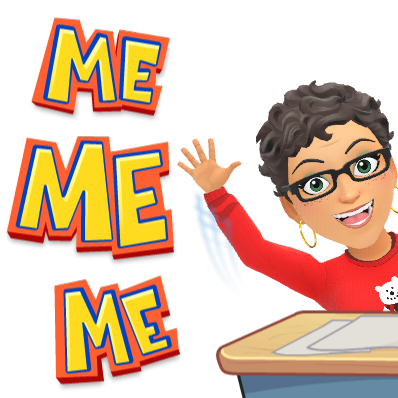When doing my readings, "According to the National Center for Education Statistics, an average of 9 percent of students in U.S. public schools are English Language Learners (ELLs); that number is closer to 14 percent in cities." However in my city school that I teach at the number is over 20 percent and climbing each year. I'm so frustrated with the lack of supports for students who don't instantly acclimate to the heavily auditory focused program offered by common core instruction. I'm excited to be able to offer them much more support than before this training.
1. Making it visual- we have been using the visual vocabulary tool "Quizlet" for some time. I'm able to print the terms out and cut them to even have students be able to have a physical and virtual copy of content level vocabulary available at every moment of their learning day. My students love this app in that I can modify the images if I need to. Students can make a login that will keep place of where they left off as they review. They can play three different games to help review with the words.
https://school.eb.com/levels/high
Using the Encyclopedia in multiple languages seems a very visual way to present and share information as well.
2. Build in more Group Work:
This has been more challenging. Some of my ELL's don't like to work with other students and feel very intimidated by group work- building the relationships has been slow but I can definitely see the benefit. I've used the "LolioNote" app to have students to be able to share slides they make individually available to the whole group. They can also make recordings and comments to one another. I like the idea of making a podcasts. We have been attempting debates in our classes and the ELL students are terribly afraid to speak in front of their peers- but on our third try- they did start to participate. I'm excited to offer the opportunity for these same students to make a podcast- offering a quiet place to record but still able to share and continue to build confidence with my students.
Another great idea is to pair students with someone and allow them to get a book in their language
Students could then share with a partner what they learned from a book that only they were able to read- and explain making them more confident and proud of their understanding of another language.
One project I"m working on currently was a group lab on water filtration design:
One project I"m working on currently was a group lab on water filtration design:
https://docs.google.com/document/d/1e_j9YyjuA8oMcbm9WYtj19xEnCiNly8_jJp0gaUI4jk/edit?usp=sharing
Students got the lab in google- so they were able to translate - they were also able to have it read to them, and even better we had partners and visuals to try and help make the assignment as approachable as possible for all learners.
Students got the lab in google- so they were able to translate - they were also able to have it read to them, and even better we had partners and visuals to try and help make the assignment as approachable as possible for all learners.
3. Talk with the ESOL teachers!
I couldn't agree more !! Google hangouts used to be my go to tool to touch base because 99% of the time schedules didn't align to have a face-to-face conversation. It was cumbersome and slightly impersonal and most often created so much lag time. This year I've simply shared my cell phone number as well as my home and school email addresses with the ESOL teachers and with our extremely limited space I do share space with them at numerous points throughout the day- making the availability to leave lessons and worksheets for them to view and comment about much more readily available.
4. HONOR THE “SILENT PERIOD.”
Honored- nothing more to say but silently wait
5. ALLOW SOME SCAFFOLDING WITH THE NATIVE LANGUAGE.
This has been a most challenging task - as the number of languages that are in one classroom sometimes are greater than 5 different languages or dialects - thus as a teacher trying to learn and absorb native terms- I'm often overwhelmed and underprepared to scaffold all the native languages. I'm very excited to be using google classroom though- As now I'm able to make work that can be daily translated into all five different native languages or read in a different language using speak-it extension. Students can even reply back in native language and I can translate back to english. It has really encouraged discussions with peers, and teachers- in that everyone feels heard and appreciated.
6. LOOK OUT FOR CULTURALLY UNIQUE VOCABULARY.
This so happened with the word "wawa" - it is apparently the term for bus in Puerto Rico-unbeknown to me- and very important to the mother trying to explain why her son hadn't been in school.
I learn more and more from my students daily. I think the most important piece of learning culturally unique terms is to listen and appreciate the small daily conversations.
7. USE SENTENCE FRAMES TO GIVE STUDENTS PRACTICE WITH ACADEMIC LANGUAGE.
The ESOL teachers use sentence frames daily. I wished I'd made the simple connection- that if that works for English class, why wouldn't it work for Science class too?
This also made great sense when I was trying to learn Spanish. I really like the Spelling City app- that helps students use sentence frames and vocabulary within the academic language. Students enjoy the games and see the learning as more fun and engaging than simple worksheets.
8. PRE-TEACH WHENEVER POSSIBLE.
I've been able to find class novels in the library listed below and able to share with ESOL teachers and help preload many common novels read in school.
https://www.multiculturalbooksandvideos.com
Another great resource to pre-teach with visuals is the Khan Academy- or Brainpop ESL- sometimes use Khan Academy as a reinforcement for something a student missed during class, or a way to Brainpop as a review before an exam offering both auditory and visual reinforcement of ideas taught in class.
9. LEARN ABOUT THE CULTURAL BACKGROUND OF YOUR STUDENTS…
It is amazing that they are offering trainings for different cultural awarenesses now. I've signed up for numeorus ones just starting this year. I really feel this has brought me much greater insights than just researching and googling as many teachers had done before. I'd love to see more speakers, and families share more of there culture while connecting more personally with the school.
I think apps such as 'remind' and google have helped increase communications with parents- but relationships still need further improvements and discussions.
I've signed up for the NYSED office of bilingual education monthly newsletter. I want to be able to connect to the professional learning community involved in better educating ELL's.
10. …BUT DON’T MAKE A CHILD SPEAK FOR HIS ENTIRE CULTURE.
Such a good reminder. Showing sensitivity and support, and running sensitive topics by the ESOL teacher would be the most proactive course to take.
11. SHOW THEM HOW TO TAKE THEMSELVES LESS SERIOUSLY…
I often have to laugh at myself. My mother frequently stated I wasn't named Grace for a reason. I think humor is important. As I help my ELL's learn a new language- I mess up things, and show them how to laugh and make mistakes more comfortably. No one is perfect - and learning language is difficult- for everyone. 12. …BUT ALWAYS TAKE THEM SERIOUSLY.
One of my favorite students came in with his parent- just this week- because he was so overwhelmed his father felt he needed to let us know what was too much for his student. He felt that we asking his son to learn to much - more than he could get, or understand. I was heartbroken in that no one ever wants a student to feel rundown and overwhelmed. I thought he was making great progress- however I think we forget to remind students of how great they are doing- how much their efforts count. It made me think and reflect on how often I encourage my ELL's and how meaningful it is to encourage and love them for their efforts.









